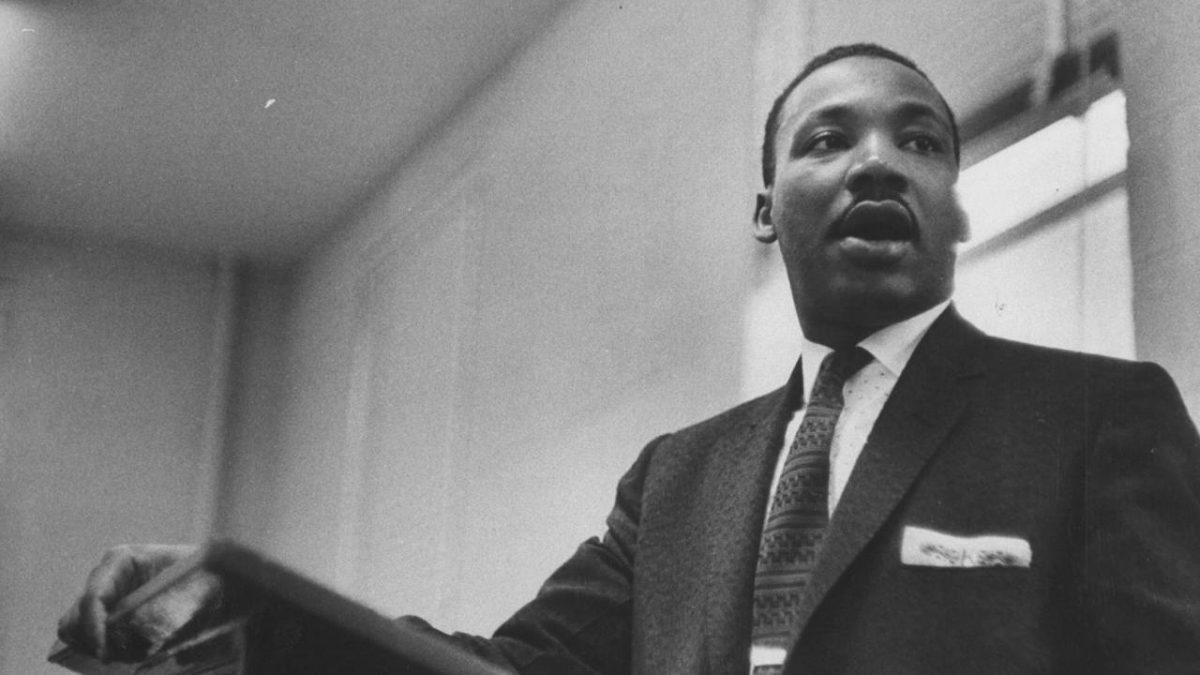Classics Library Exhibition Flyer
The John Miller Burnam Classics Library celebrates Professor Jack L. Davis who has been awarded the 2020 Gold Medal for Distinguished Archaeological Achievement, the highest award the Archaeological Institute of America bestows. The exhibition in the main Reading Room of the Library, in the Blegen Library building, highlights Professor Davis’s illustrious academic career and extensive publications.
UC Classics has a long history of excellence in Classical Archaeology. Jack L. Davis joins the distinguished company of four previous AIA Gold Medal recipients from the UC Department of Classics: Carl W. Blegen (1965), John L. Caskey (1980), Emmett Bennett (2001), and C. Brian Rose (2015).
Professor Davis received his Ph.D. in Classics from the University of Cincinnati. The title of his 1977 dissertation was Fortifications at Ayia Irini, Keos: Evidence for history and relative chronology (CLASS Stacks C.U. 151.77.D28). Already as a student, Professor Davis had worked with another famous UC archaeologist, Gerald Cadogan, at Knossos and with Caskey at Ayia Irini on the Cycladic island of Keos.
He has since directed regional archaeological projects in the Nemea Valley, and on the island of Keos, and in Messenia around the Palace of Nestor. In addition, he has led regional studies and excavations in Albania of the ancient Greek colonies of Dyrrachium/Epidamnos and Apollonia.
UC Professor Carl Blegen uncovered the “Palace of Nestor” and led systematic excavations at Pylos, 1952-1966, after his initial campaign in 1939. Already in his first year, he discovered a cache of a large number of clay tablets with a syllabic script referred to as Linear B, which was later understood to be the earliest example of Greek. Professor Davis resumed and directed excavations around the Palace of Nestor, together with his wife, archaeologist Sharon R. Stocker, many years later. In 2015, the couple created a world-sensation with the discovery of an intact Bronze Age shaft tomb containing more than 3,000 artifacts including weapons, jewelry, armor and silver and gold objects such as a very unusual Minoan seal stone depicting warriors in combat with detailed representations of the bodies of the men, leading some admirers to refer to the unknown artist as a Minoan “Michelangelo,” and four signet gold rings with detailed images of goddesses and bull leapers. The tomb has been dated to c. 1500 BCE, so most likely before the Mycenaean hegemony and the Palaces and the Trojan War, described in Homer’s Iliad.
Before Professor Davis came to UC as faculty in 1994, he had taught at the University of Illinois at Chicago, 1977-1993. He later served as Director of the American School of Classical Studies at Athens, 2007-2012. He has moreover held visiting professorships and positions at UC Berkeley, Stanford, Cambridge, and Northwestern among other institutions.

A reception for Professor Davis was organized by the Classics Department with a thank you speech in which Davis most memorably thanked his mother, his wife (archaeologist Shari Stocker), and his mother-in-law.
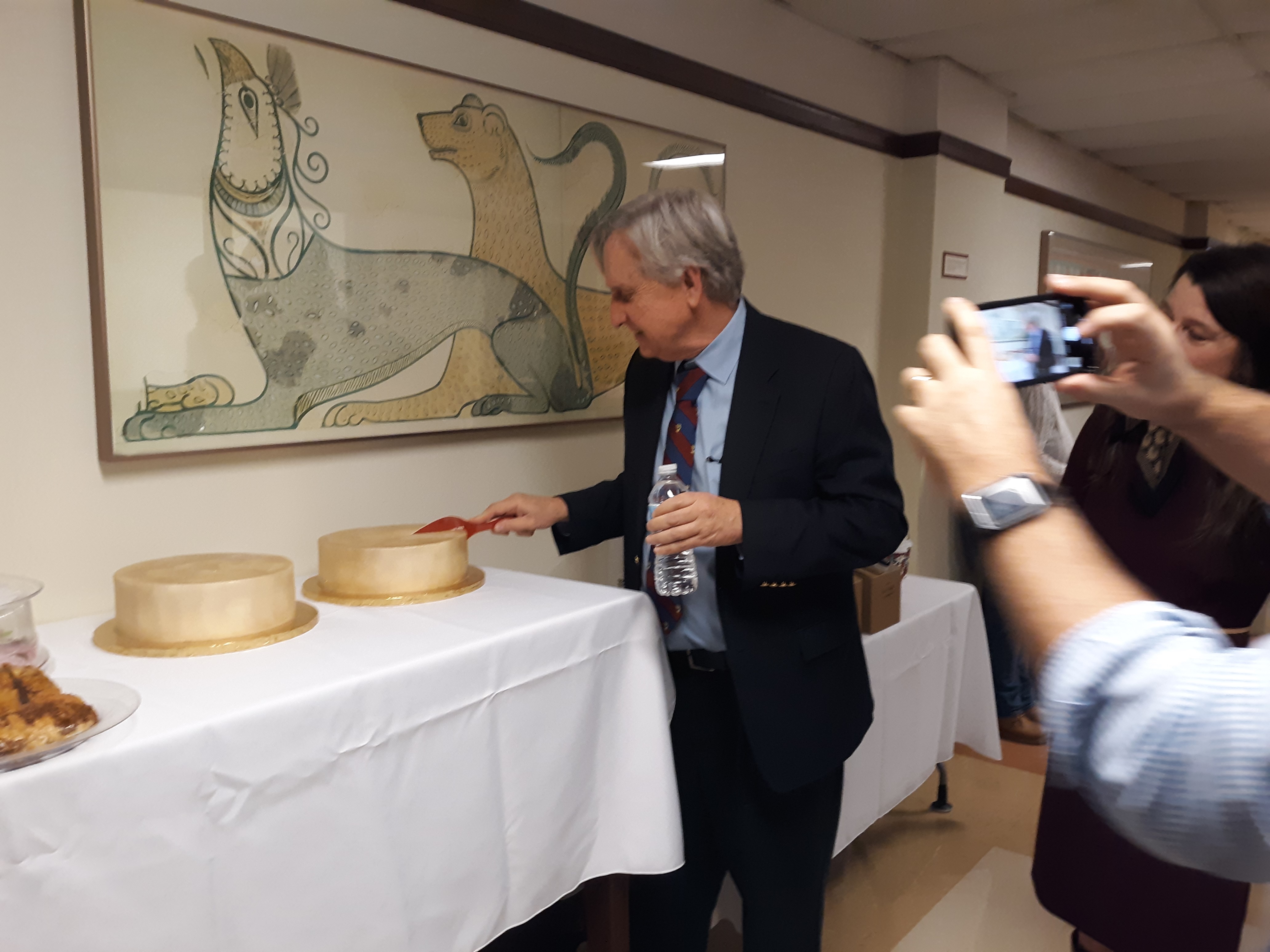
Professor Davis cuts a gold cake served in honor of his AIA Gold Medal award at the reception in the Classics Department.
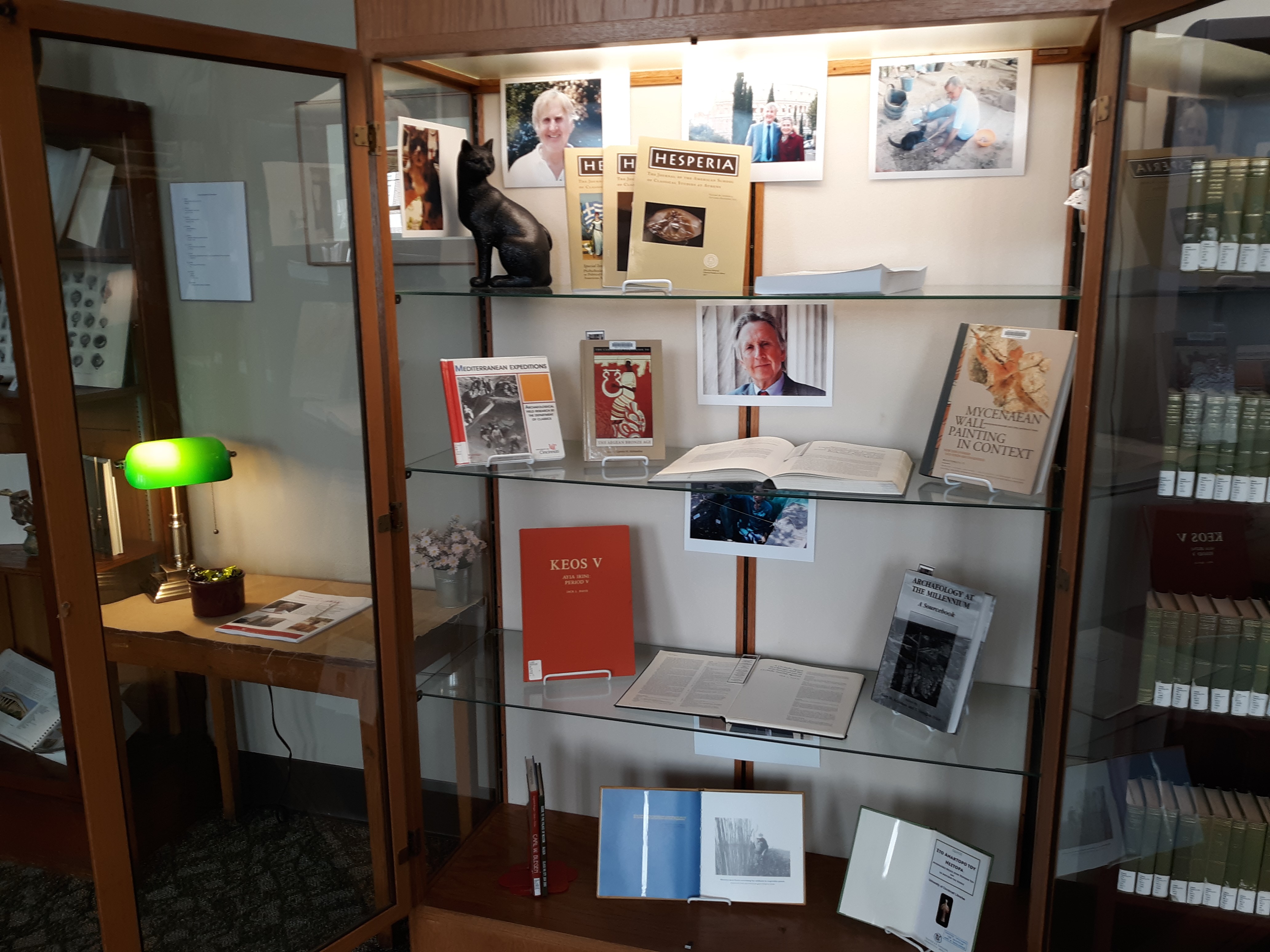
Exhibition in the Classics Library honoring Jack L. Davis’s achievements, including his pioneering archaeological studies and excavations and extensive publishing output.
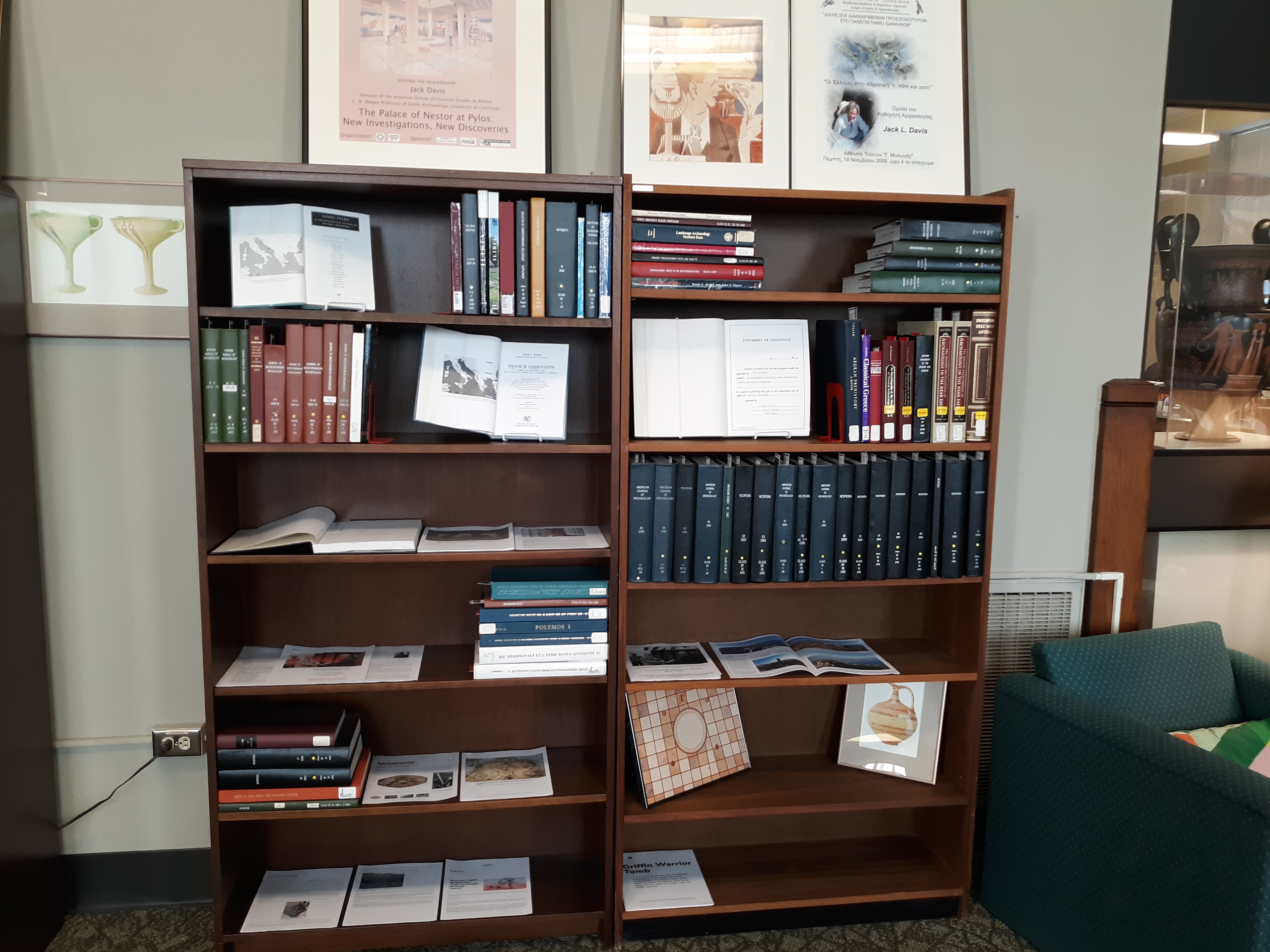
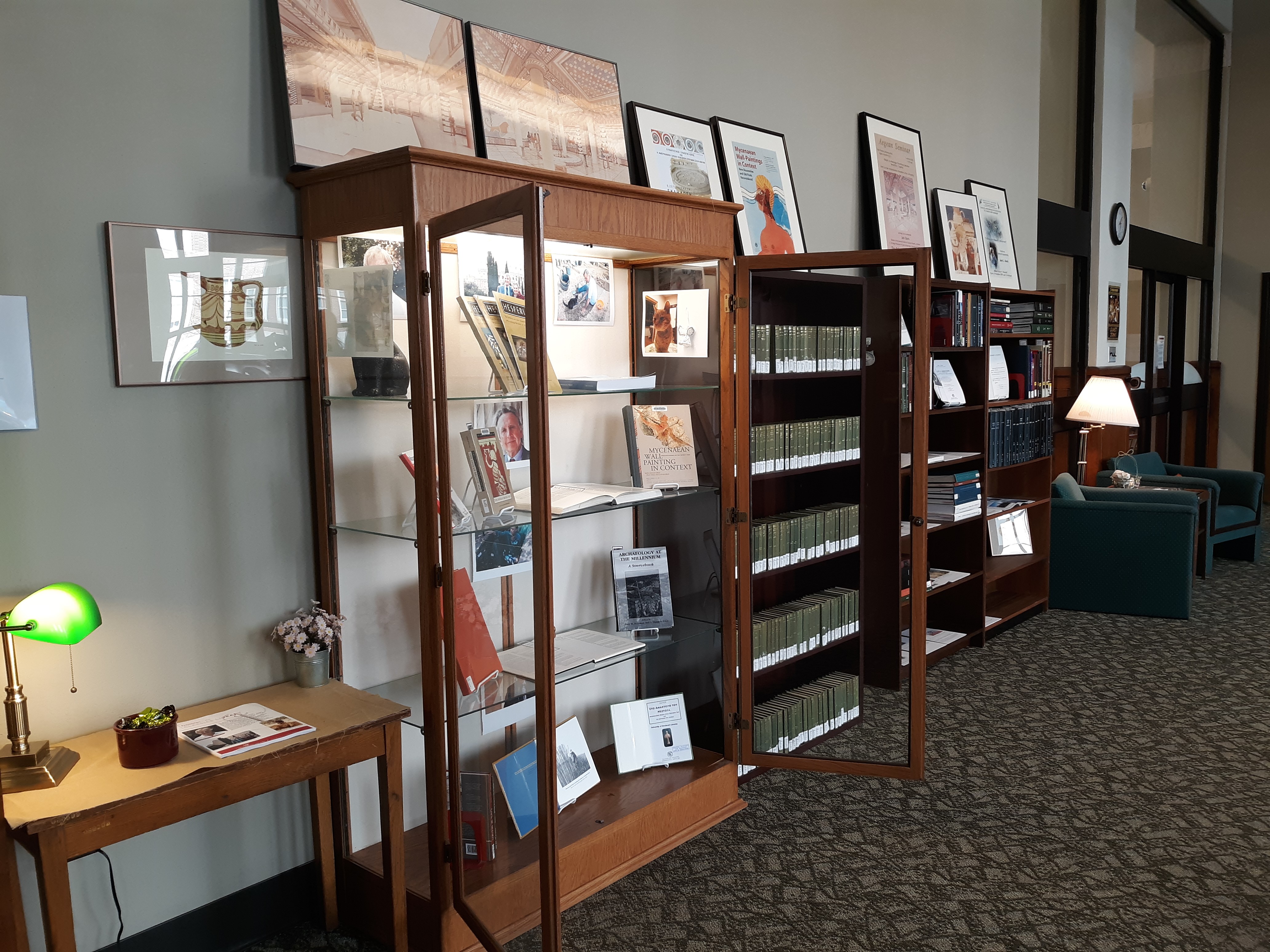

Tytus Fellow Kenneth Sheedy, Research Associate Shari R. Stocker, Professors Jack L. Davis, and Peter van Minnen.

Some of Professor Davis’s books include:
Papers in Cycladic Prehistory (Los Angeles 1979).
Keos V. Ayia Irini: Period V (Mainz 1986).
Landscape Archaeology as Long-Term History: Northern Keos in the Cycladic Islands (Los Angeles 1991).
Sandy Pylos: An Archaeological History from Nestor to Navarino (University of Texas Press 1998).
A Guide to the Palace of Nestor, Mycenaean Sites in Its Environs, and the Hora Museum (American School of Classical Studies at Athens 2001).
An Historical and Economic Geography of Ottoman Greece: The Southwestern Morea in the Early 18th Century (American School of Classical Studies at Athens, 2005).
Between Venice and Istanbul: Colonial Landscapes in Early Modern Greece (American School of Classical Studies at Athens, 2007).
Philhellenism, Philanthropy, or Political Convenience (American School of Classical Studies at Athens, 2013), coedited with Natalia Vogeikoff-Brogan.
Carl W. Blegen: Personal and Archaeological Narratives (American School of Classical Studies at Athens, 2015) with Natalia Vogeikoff-Brogan and Vivian Florou.
Mycenaean Wall-Painting in Context (Paris and Athens, 2015), edited with Hariclia Brecoulaki and Sharon Stocker.
The Pylos Regional Archaeological Project (American School of Classical Studies at Athens, 2017), edited with John Bennet.
His articles, book chapters, book reviews, conference proceedings are too numerous to list here. A fuller account is included in the exhibition.


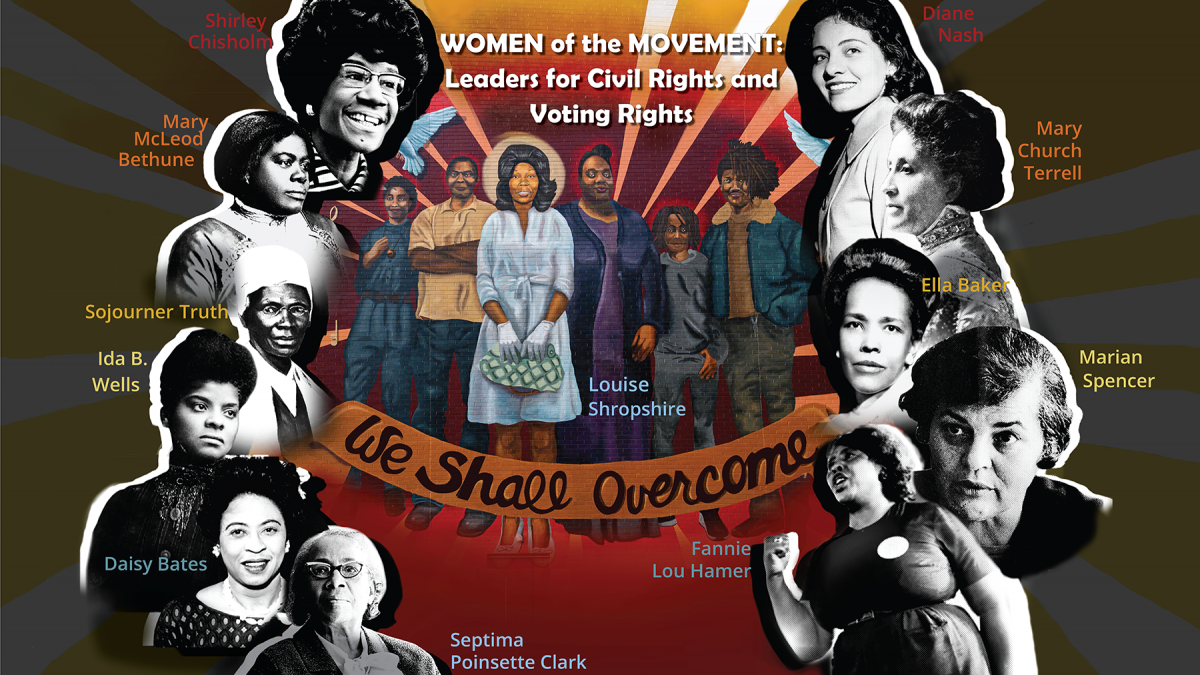

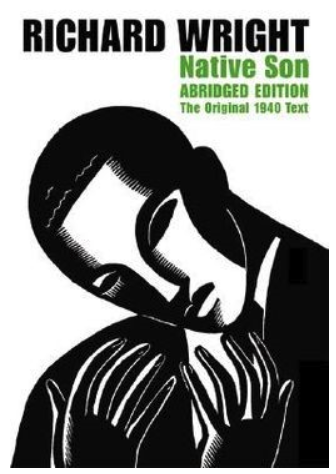









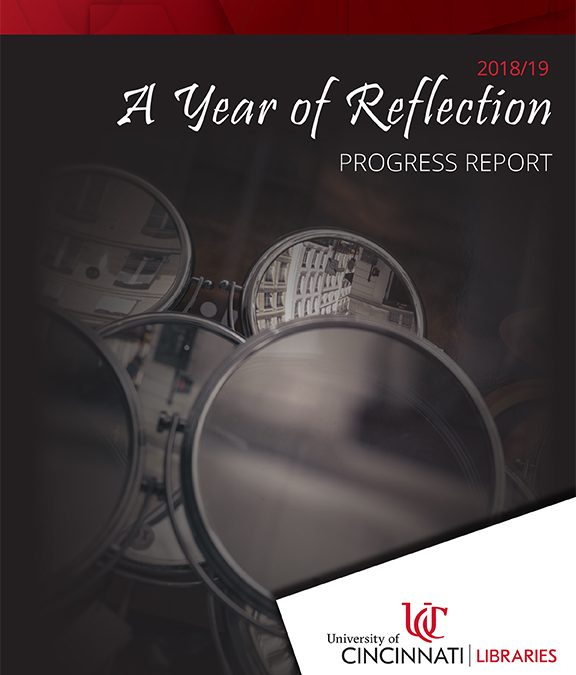 This past year the University of Cincinnati marked its Bicentennial led by the tenants: To Honor the past. Elevate the present. Bend the future. While
This past year the University of Cincinnati marked its Bicentennial led by the tenants: To Honor the past. Elevate the present. Bend the future. While